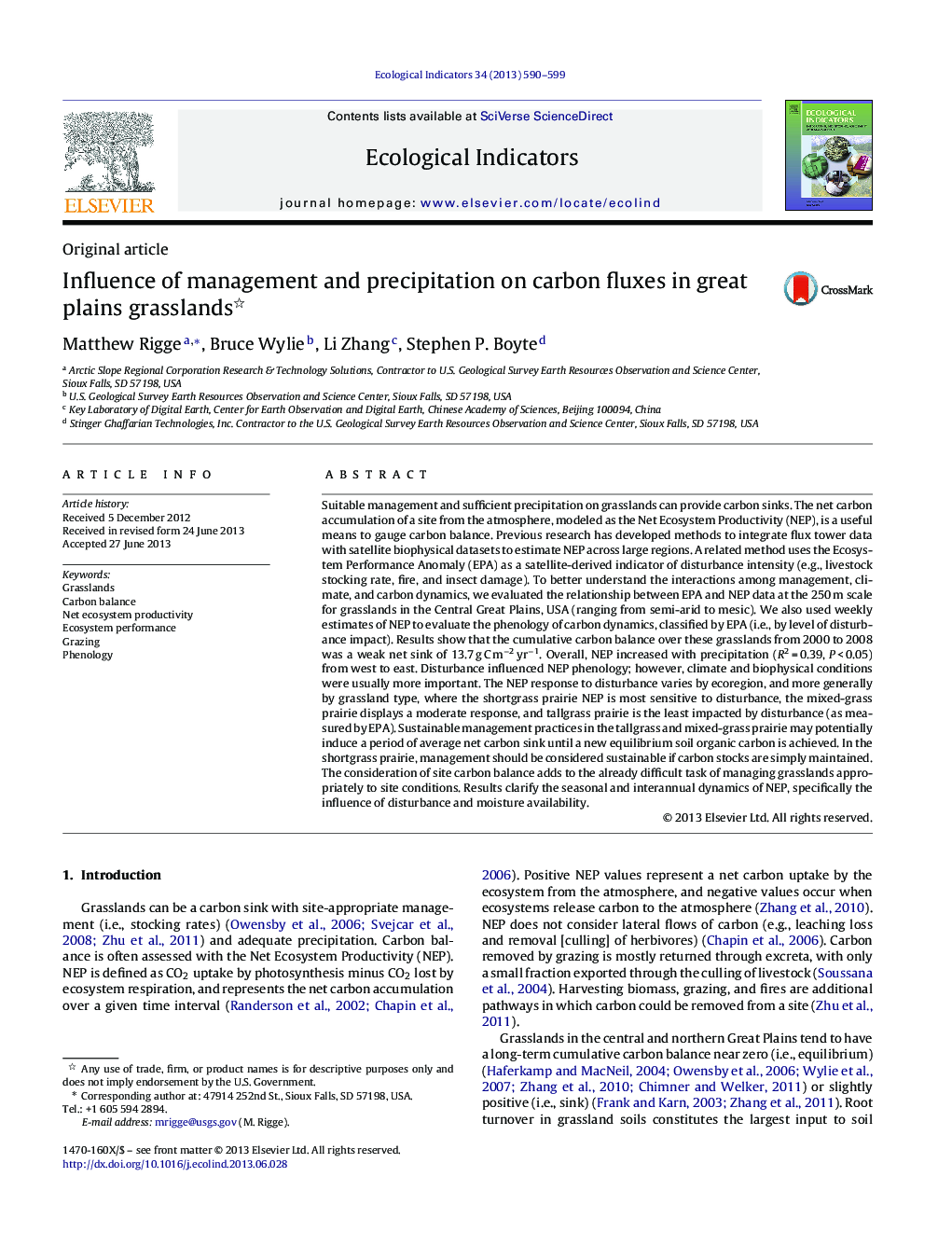| کد مقاله | کد نشریه | سال انتشار | مقاله انگلیسی | نسخه تمام متن |
|---|---|---|---|---|
| 6295367 | 1617166 | 2013 | 10 صفحه PDF | دانلود رایگان |
عنوان انگلیسی مقاله ISI
Influence of management and precipitation on carbon fluxes in great plains grasslands
ترجمه فارسی عنوان
تأثیر مدیریت و بارش بر روی شیب کربن در مراتع دشتهای بزرگ
دانلود مقاله + سفارش ترجمه
دانلود مقاله ISI انگلیسی
رایگان برای ایرانیان
کلمات کلیدی
چمنزارها، تعادل کربن، بهره وری اکوسیستم خالص، عملکرد اکوسیستم، گاو نر. فنولوژی،
موضوعات مرتبط
علوم زیستی و بیوفناوری
علوم کشاورزی و بیولوژیک
بوم شناسی، تکامل، رفتار و سامانه شناسی
چکیده انگلیسی
Suitable management and sufficient precipitation on grasslands can provide carbon sinks. The net carbon accumulation of a site from the atmosphere, modeled as the Net Ecosystem Productivity (NEP), is a useful means to gauge carbon balance. Previous research has developed methods to integrate flux tower data with satellite biophysical datasets to estimate NEP across large regions. A related method uses the Ecosystem Performance Anomaly (EPA) as a satellite-derived indicator of disturbance intensity (e.g., livestock stocking rate, fire, and insect damage). To better understand the interactions among management, climate, and carbon dynamics, we evaluated the relationship between EPA and NEP data at the 250 m scale for grasslands in the Central Great Plains, USA (ranging from semi-arid to mesic). We also used weekly estimates of NEP to evaluate the phenology of carbon dynamics, classified by EPA (i.e., by level of disturbance impact). Results show that the cumulative carbon balance over these grasslands from 2000 to 2008 was a weak net sink of 13.7 g C mâ2 yrâ1. Overall, NEP increased with precipitation (R2 = 0.39, P < 0.05) from west to east. Disturbance influenced NEP phenology; however, climate and biophysical conditions were usually more important. The NEP response to disturbance varies by ecoregion, and more generally by grassland type, where the shortgrass prairie NEP is most sensitive to disturbance, the mixed-grass prairie displays a moderate response, and tallgrass prairie is the least impacted by disturbance (as measured by EPA). Sustainable management practices in the tallgrass and mixed-grass prairie may potentially induce a period of average net carbon sink until a new equilibrium soil organic carbon is achieved. In the shortgrass prairie, management should be considered sustainable if carbon stocks are simply maintained. The consideration of site carbon balance adds to the already difficult task of managing grasslands appropriately to site conditions. Results clarify the seasonal and interannual dynamics of NEP, specifically the influence of disturbance and moisture availability.
ناشر
Database: Elsevier - ScienceDirect (ساینس دایرکت)
Journal: Ecological Indicators - Volume 34, November 2013, Pages 590-599
Journal: Ecological Indicators - Volume 34, November 2013, Pages 590-599
نویسندگان
Matthew Rigge, Bruce Wylie, Li Zhang, Stephen P. Boyte,
